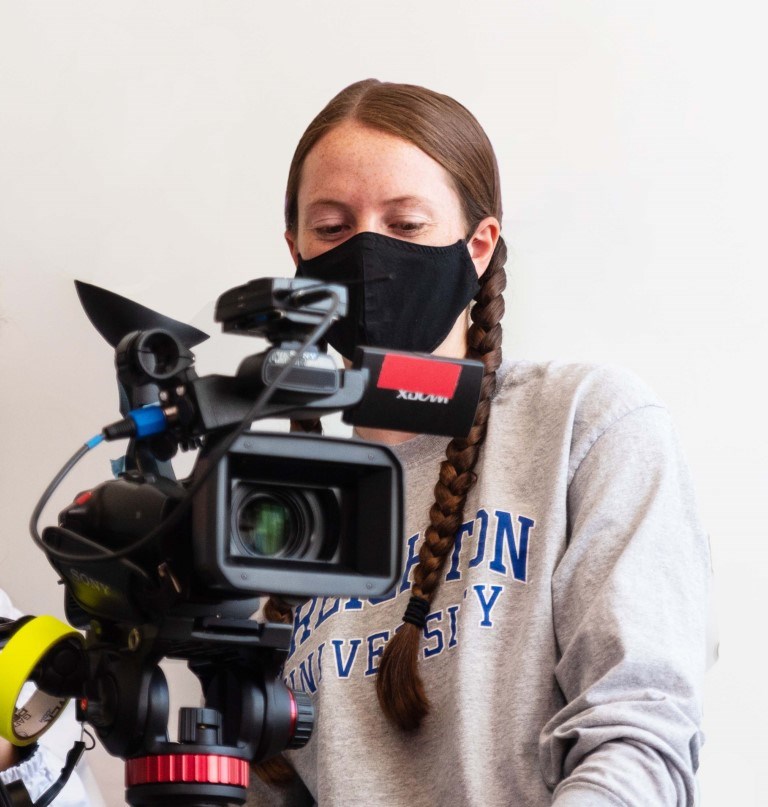The Longmont Leader accepts contributions, photos, and op-eds for publication from community members, business leaders and public officials on local topics. Publication will be at the discretion of the editor and published opinions do not represent the views of the Longmont Leader or its staff. To submit a contribution, email [email protected].
There is something innately human about the desire to share thoughts, reflections, and opinions with others. In education speak, this is called “student voice.” While the drive to find your voice remains constant — the avenues to express it are continually evolving. Budding journalists, directors, podcasters, videographers, and creative communicators of all stripes are getting their start in our public schools. Educators across St. Vrain schools are equipping these future storytellers with the skills, knowledge, and opportunities to find — and successfully communicate — their voices in any medium.
In a media landscape where video is consumed at greater and faster rates, students across the district are also gaining experience in front of and behind the camera. At Westview Middle School, a student-produced video news broadcast, Westview TV (WTV), introduces students to video production. “The goal of WTV is simple,” shared David Kline, a Math Teacher who has facilitated this student-run broadcast for seven years, “to create a place for students to tell their stories.”
It would be natural to assume that the pause button had to be pushed on WTV when schools across the country went virtual last spring, but, “we actually increased the frequency of our episodes during the remote time,” Kline says. “WTV became a critical tool for keeping our school community connected.” Using iPads in their backyards and living rooms, students were able to offer critical opportunities for connection to the rest of the student body throughout virtual learning.
High school students across the district can access industry-level media production equipment at both the Innovation Center and the Career Elevation and Technology Center, where they hone their technical, storytelling, and entrepreneurial skills simultaneously. Through studio courses and client-based projects, students gain real-world experiences in telling compelling stories from start to finish.
“They learn the whole gamut,” said Instructional Technologist, Jeffrey Lund. “They learn how to storyboard, light a scene, sit with a client, get audio, and edit it all together for the right platforms.”
Lund leads a course focused on studio production, where students learn to completely run a live broadcast using professional equipment. “It means that after graduation, these students can walk into a client meeting, or onto a set, and already know how things work,” says Lund.
Colton Stedman, a senior at St. Vrain Virtual High School, is also a member of one of the student media production teams. “It can be nerve-wracking, knowing your work will actually be seen by so many people,” they acknowledged, “but that’s also what makes it so rewarding to be trusted with real-world projects as a student.”
The student newspaper is a hallmark of the high school experience and one of the classic avenues of student expression. But gone are the days of reading about a school dance that transpired weeks ago and getting ink smudged all over your clothes in the process. School newspapers like “The Mav” at Mead High School and the “Talon Tribune” at Silver Creek High School, contain dynamic, thought-provoking articles from students that are published immediately to the web.
The Mav’s staff covers not only school news, but national and state issues, in addition to hosting podcasts, photojournalism, and columns on wide-ranging topics. “We are entirely student-run,” shared The Mav’s Editor-in-Chief, Arizona Lee, “which allows for our reporters to work closely with their peer editors on staff to produce anything they feel passionately about. I love watching new reporters grow to understand that their voice matters and that The Mav will help their voice be heard — it is such an empowering feeling.”
The virtual format allows students to not only cover stories in a timely manner, but to distribute them far beyond the school halls, with access to real-time data about readership and reach. Mav Student News advisor Jamie Hedlum added, “our students are writing things that matter to them and it emboldens their agency and excitement! Every time a student bursts into my room to tell me their article reached so many engagements or had so many views on our website, I share their excitement and pride.”
“I can completely attribute being able to develop confidence in the impact of my voice as a student to working on The Mav as a reporter, content editor, and now editor-in-chief over the last three years,” shared Lee. “Knowing that my voice, and, truly, the voice of the student body which I work to represent as a student journalist, can create change has helped myself and my peers find and express our voices.”
While the spoken word has long been a powerful way to communicate ideas, podcasting has been a rapidly growing format for it. Many teachers across the district offer podcast creation as an alternative to the typical five-paragraph essay. Recent Silver Creek graduate, Peter Fredo, created a podcast, “Grow Through It,” for his capstone project at the Silver Creek Leadership Academy. Aimed at helping students learn about growth mindset, this podcast has enabled Fredo to interview and learn from CEO’s, authors, and superintendents. If Fredo were to take the 13+ episodes of his podcast and transcribe them, his thoughts would fill a 72-page book.
Schools in St. Vrain teach students in advanced thinking and to form ideas worth communicating. Students are learning which medium is best suited for their unique voice, audience, and purpose. Regardless of the medium: video, written word, or spoken word, St. Vrain Valley Schools is creating innovative and inspiring ways to give students a voice.



